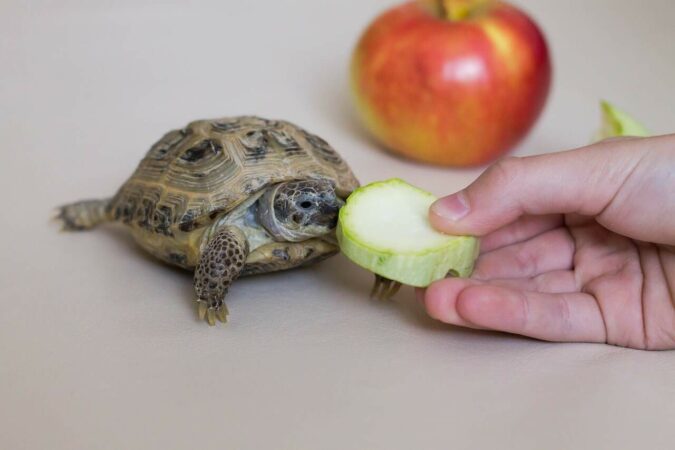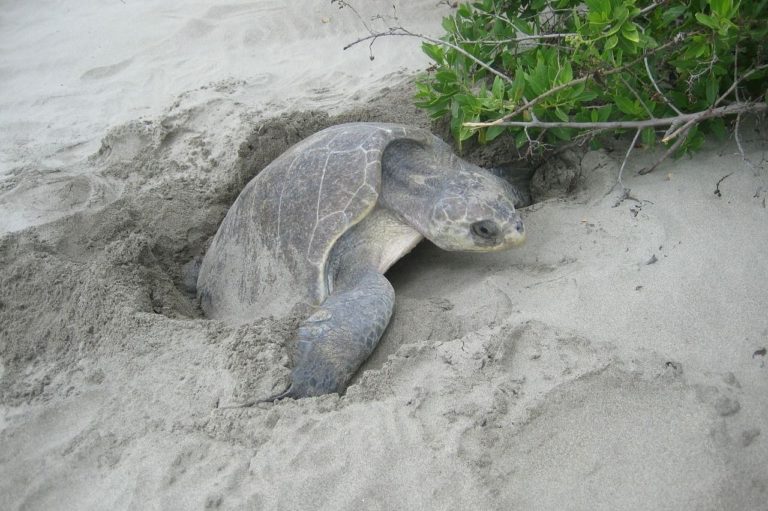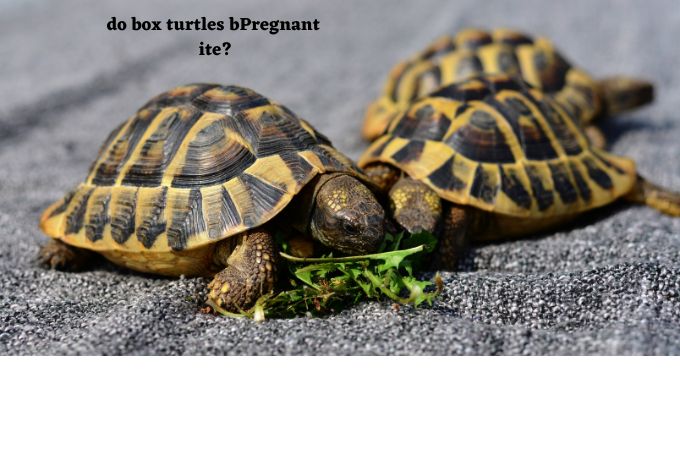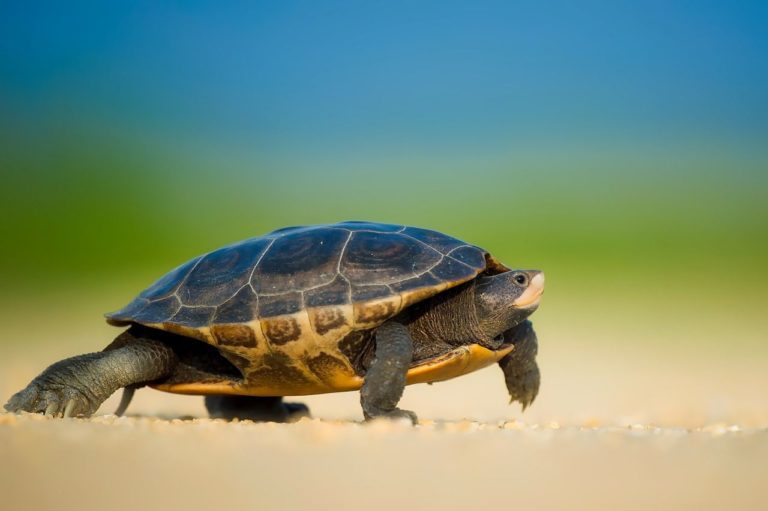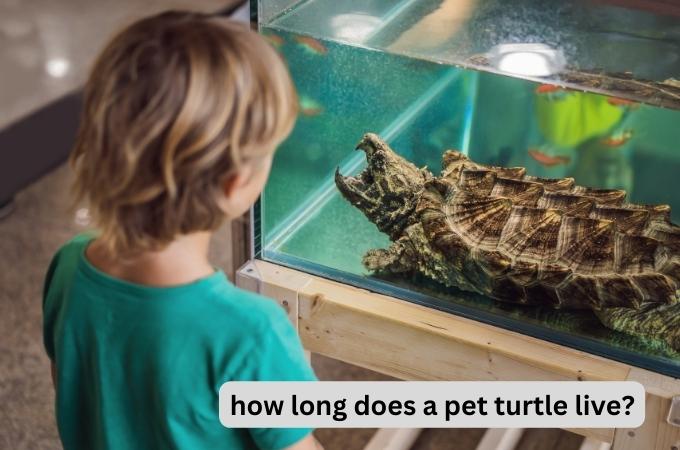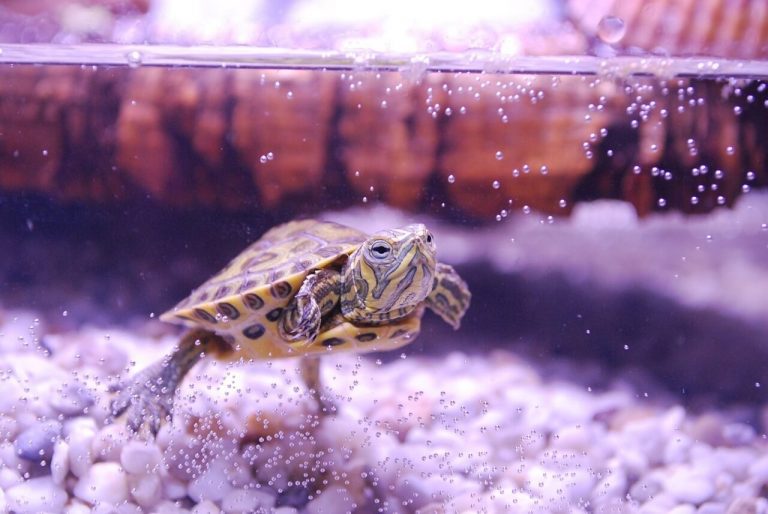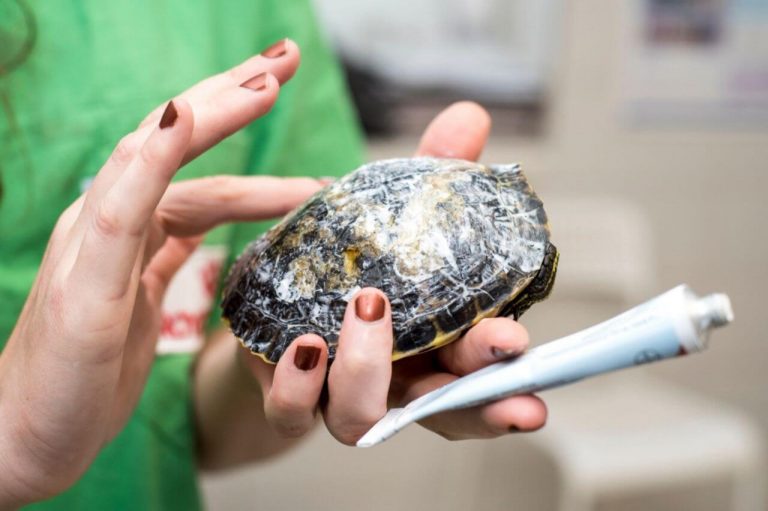Why is My Turtle Not Eating | What Should I do in This Situation?
I have owned a painted turtle for the past three years. Initially, it was a honeymoon period with him. He would eat regularly and move around the enclosure, and I would be amazed at everything the turtle did. Suddenly, everything changed, and I noticed that my painted turtle had stopped eating.
I was terrified and started seeking suggestions from my fellow turtle owners. Somehow, I was able to help the turtle recover from this condition. Now, I know that many people have the same question, “Why is my turtle not eating?”
Since I have been through these scary moments, I want to help my fellow owners. It is normal for turtles to not eat for several days at times. If this happens, check the water parameters, the turtle’s health, the diet chart, etc., to determine the exact cause of the turtle’s loss of appetite.
By doing so, you will be able to address the starvation period of your beloved pet with ease.
Why Is My Turtle Not Eating?
When I saw my painted turtle had stopped eating, I didn’t only find a temporary solution to it. I talked with several experienced turtle owners and read multiple blogs on it to solve the issues correctly if it ever happens.
So, I am putting all of them for you.
[amazon box=”1708103775″ grid=”1″ price=”none”]
Stress and Anxiety
It is the main reason for turtles not eating when you bring them home for the first time. It will be a little awe-struck with the changing conditions of the surroundings. So, it will feel stressed. Also, turtles dislike touches.
Hence, if you mishandle the slow-mover frequently, it will still feel stressed. And a stressed turtle will most likely lose its appetite until it feels relaxed in the new environment.
Temperature Changes
Turtles are very sensitive to water temperature changes. If the water is too hot or too cold in the aquarium, the turtle will exhibit abnormal behavior, especially if the temperature drops below its preferred conditions. It may interpret this as the arrival of winter and prepare for hibernation.
turtles have a slower metabolism at lower temperatures, which can cause them to eat less or stop eating altogether in extreme cases. It’s important to note that the optimal temperature for turtles varies by species, and the temperature will also differ between the water and the basking spot.
- A red-eared slider will thrive in 75-80°F water. And for basking, it needs 80-90°F for a comfortable living.
- Box turtles love water temperatures around 70-78°F, and their basking spot temperature should be around 85°F all the time.
- Painted turtles will need 75-78°F for water and 80-85°F temperature around their basking area.
When the temperature shrinks, the turtle won’t eat as much as it consumes in normal conditions.
Inappropriate Lighting
Proper temperature and lighting are crucial for pet turtles. They require 10 to 14 hours of light each day, with the remaining time being nighttime.
UVB lighting is also necessary for turtles to meet their nutritional needs. Without it, they may develop a vitamin D3 deficiency, which can lead to loss of appetite.
Improper Diet
Turtles may stop eating if they find their diet unsuitable. Many turtle owners rely on a fixed diet chart primarily consisting of commercial pellets, but this is not recommended.
Feeding turtles the same items repeatedly can make them angry and cause them to stop eating or refuse to eat altogether.
Illness
The most concerning cause of turtles not eating is an illness. So, whenever turtles stop eating, check it to find the sign of disease, if any.
- Breathing difficulty, sneezing, and swollen discharges are the primary signs of a diseased turtle. Also, respiratory infection can be a major concern if the turtle becomes lethargic.
- If the shell looks discolored, it might have been caused due to the lack of Vitamin A.
- A constipated turtle will not eat regularly. If you don’t see faces or food waste inside the tank, it is a sign of constipation for the turtle.
- Female turtles will stop eating mostly because of dystocia. It refers to the inability of the female turtle to pass the eggs through its body. It will soon develop lethargy and might start losing weight if actions are not taken soon.
What to Do When Turtles Stop Eating?
When your turtle stops eating or eats less than usual, it can be concerning. However, I would suggest that you carefully observe the turtle for at least the next two days. Remember that turtles are hardy animals, and going without food for three to five days will not affect them.
If the turtle does not start eating within this period, you will need to continue observing it. First, check for any signs of sickness. If you suspect that it has stopped eating due to illness, it is better to consult a vet as soon as possible. Breathing difficulties can also be lethal if not treated in a timely manner.
Check the water temperature and make any necessary adjustments. You may need to add extra lighting as well. Additionally, the UVB light can lose its heating capacity due to debris and dust buildup. Clean the lighting fixtures regularly to maintain the correct temperature.
Also, ensure that the water is clean. It is advised to change 50% of the tank water once every three weeks to keep it clean and tidy.
Lastly, include a wide variety of foods in the turtle’s diet. You can provide fresh foods such as lettuce, spinach, carrots, and cucumbers.
I have even seen my painted turtle eat cooked and boiled chicken and fish, so you could try this as well.
Conclusion
There are several reasons why turtles may refuse to eat. Fortunately, most of these issues can be resolved with the help of a veterinarian. This article aims to provide assistance for those facing the challenge of a turtle not eating. When a turtle stops eating, it is important to first assess its overall health. Additionally, carefully evaluate the water and the turtle’s environment. Lastly, ensure that the turtle is content and in a favorable state to encourage regular eating habits.
